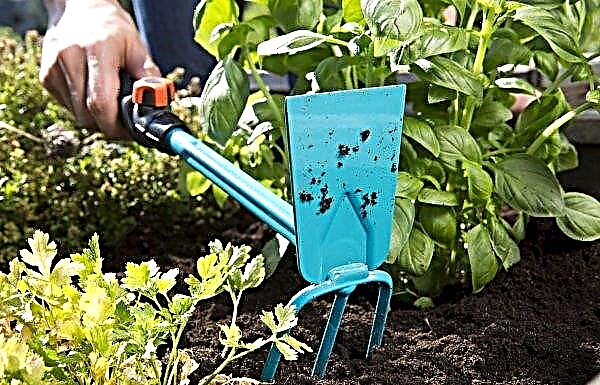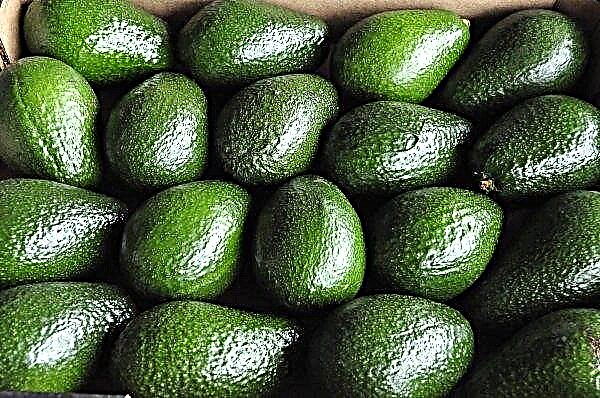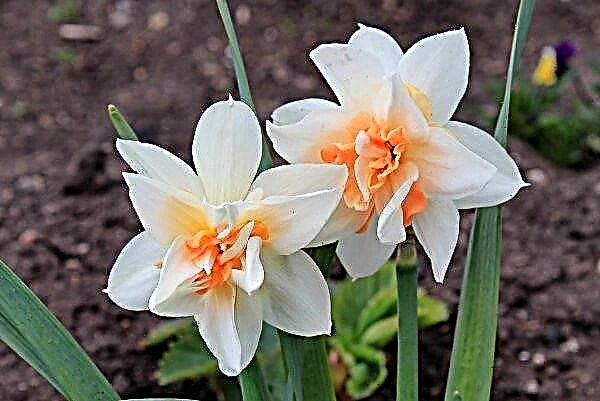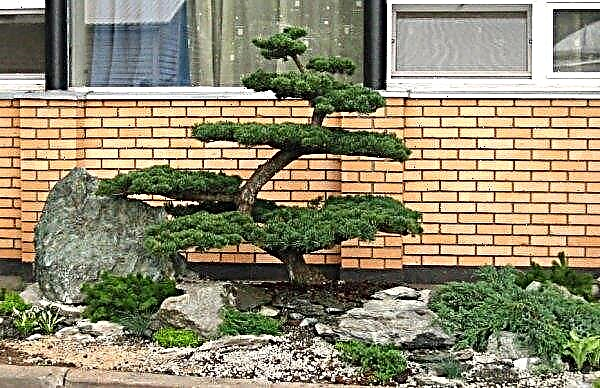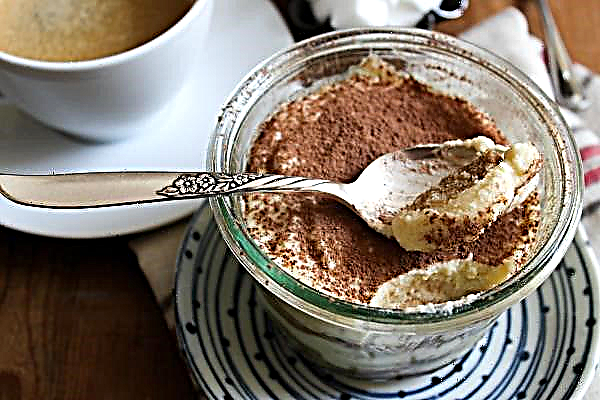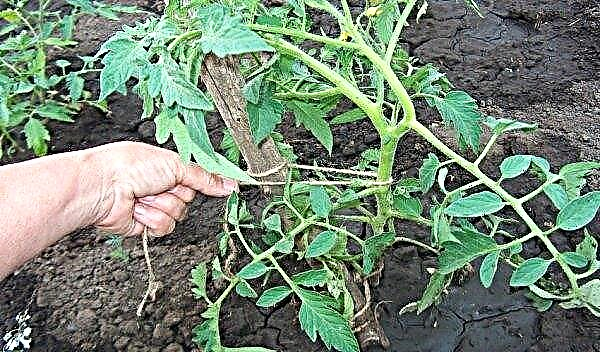Anthurium is the name of the genus of evergreen herbaceous plants found in the tropical mountain forests of America. Among all species included in this genus, the most popular and noteworthy is Scherzer's anthurium. This plant is grown around the world as a decorative greenhouse or indoor. About it and will be discussed in our article.
Botanical description of the plant
Scherzer Anthurium belongs to epiphytes - plants that grow on other representatives of the flora or are constantly attached to them, but do not rob them of their nutrients. Maybe ground. It has a short (up to 15 cm) and thick (about 2 cm) green stem covered with wide-lanceolate dark green leaves with a pointed end.
The sheet plate is of medium thickness, and the central core is mostly convex and only recessed at the end. Anthurium blooms with bright, saturated and fragrant flowers that open on a long (up to 50 cm) peduncle. The inflorescence has the shape of a cone-shaped cob 2–8 cm long and about 4 mm in diameter.Did you know? The Latin name for the genus of herbaceous plants Anthurium is derived from the merger of two ancient Greek words, which translate as «flower» and «tail».
Often twisted into a spiral. A bractal bedspread with a glossy, like that of leaves, surface of bright colors (from pale orange to red) departs from the base of the cob. From the moment of opening the stigma to its withering, three months pass. After the fruit is formed, the berry is orange or red.
| Root system | numerous, thin |
| Stem | short, straight |
| Leaf shape | sharp lanceolate wide |
| Leaf color | dark green |
| Flower shape | cob and bract |
| Flower color | pale orange to red |
| Fruit shape | round |
| Fruit color | orange red |
Varieties
Anthurium Scherzer has about 40 cultural forms.
The most popular of them:
- Lacetti - It has a pink leathery cover and dark green foliage that is the same to the touch; the cob is spiral-shaped, often used to form bouquets.
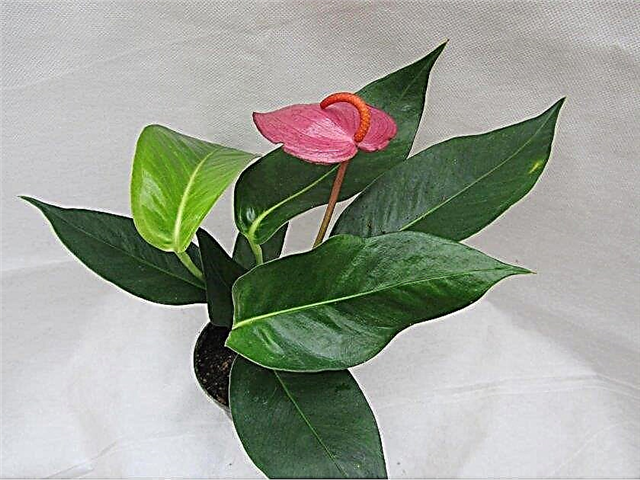
- Graffiti - It has a wide snow-white coverlet dotted with red dots of various sizes, dense to the touch, an orange cob.

- Hawaii - in the color of the bractal bedspread there are several shades at once, usually two or three, the cob is pale yellow or with a greenish tint.

- Alexia Blue - a rather rare subspecies with an elongated coverlet of sky-blue color and the same ears.

- Chocolate Love - The owner of dark green dense foliage and rich brown bracts of a slightly rounded shape.
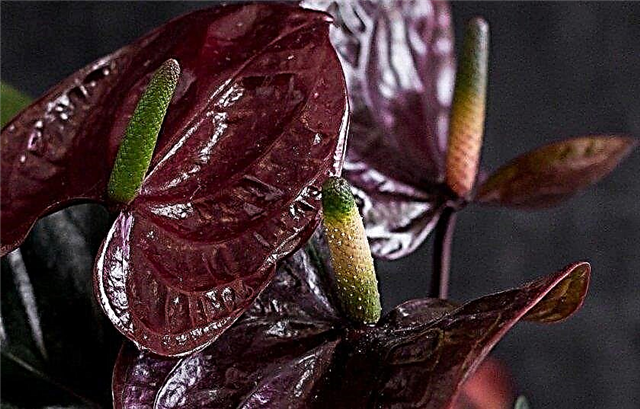
- Rubens - a bracts rounded veil surrounds the ear on all sides, the color of the veil is rather unusual: the pointed part is bright pink, and green below.

Growing conditions
Since the flower came to us from the humid tropics, then at home he needs to recreate a similar microclimate.
Accommodation
The flower loves sunlight very much, but not direct, but diffused, so it is better to place it on the eastern and western windows. Here he will receive enough light, and the leaves will not receive burns and lose their decorative appearance. In winter, it is advisable to organize additional lighting.
Important! Anthurium is very poorly tolerated by drafts.
Temperature mode
In spring, when the flower is actively growing, the temperature should be +22 ... + 25 ° С. In autumn and winter, +15 ... + 17 ° C will be enough. It is very important that the thermometer column does not fall to a mark of +10 ° C or lower, otherwise the buds will cease to form.
Air humidity
Anthurium needs high humidity. With such a moisture content in the air that a flower needs, it will be difficult for a person to be indoors, so you need to increase humidity zonally by placing additional humidifiers in the form of a fountain, a container with moistened pebbles or a regular humidifier at the flower pot.

Home Care
A tropical flower really needs attention. Without proper care, he will quickly lose his beauty.
Watering and spraying
Irrigating a hygrophilous plant should be done every three days using warm water with low acidity. It is important that before the next watering, the earth in the pot dries from above, this prevents the roots from jamming.
As soon as moisture is absorbed into the soil and the residues drain into the pan, they must be drained. You also need to wipe the foliage several times a day with a damp rag if the apartment is very dry, and spray the plant with warm water. In winter, you need to water with an interval of 3-4 weeks.
Important! When spraying anthurium, you need to try so that there is no direct hit of water on the foliage, so there may be a lime coating on them. No moisture should get on the inflorescence.
Top dressing
In the spring-autumn period, when the flower is actively growing, it needs to draw energy from somewhere for growth, therefore it needs to be fed constantly. Fertilizing is carried out twice a month. Liquid mineral fertilizers rich in phosphorus and potassium are used. In winter, the plant does not need to be fed.
Pruning
In each growing season with the advent of new young leaves, the old ones in the lower part gradually die off. Such a change of foliage leads to the fact that the flower stretches and becomes “bald” from the bottom, losing its decorative effect.

To avoid this, it is necessary to regularly trim in the upper part of the flower, leaving the number of internodes that, in your opinion, is most suitable for the appearance of the plant. The cut off top can be rooted in water or moist vermiculite.
Transfer
The frequency of transplantation depends on the age of the anthurium. The young flower grows quickly, so the root system instantly fills the entire space of the pot. In order for anthurium to receive a normal amount of nutrients, it must be transplanted every spring. As they grow older, growth slows down, and filling the roots of the pot is not so intense, which means that you need to transplant the flower less often, every three to four years.

Anthurium Scherzer is very fond of the substrate being loose and light. Such soil passes air and moisture best. You can use special soil for anthuriums from a flower shop or prepare the substrate yourself by mixing 2 parts of leafy soil, 2 parts of peat and one part of sand and vermiculite.
The transplant process looks like this:
- First, a tall and narrow pot is selected.
- Its bottom is lined with drainage from gravel or expanded clay.
- Sprinkle on top with a small layer of prepared soil.
- From the old capacity to the new anthurium is moved by transshipment and sprinkled with fresh earth. It is slightly compacted and irrigated.
Did you know? The first who discovered anthurium was the biologist Eduard Francois Andre. It happened in 1876. Together with him, the flower came to Europe and settled in the Kew Royal Botanic Gardens in England.
Breeding
Scherzer anthurium propagates in various ways: division, lateral shoots, cuttings, leaf, seeds. We describe the process of several methods of reproduction.
Cuttings
This is a fairly simple method of reproduction:
- In the spring, the top of the flower with two or three leaves is cut off and put into the water. You can separate the side shoot, which launched several aerial roots.
- To speed up the appearance of roots, the stalk is treated with a growth stimulant and covered with a plastic bottle.
- It is placed in a room with a temperature of +23 ... + 26 ° C and high humidity. Provide long daylight hours and soft lighting.
- With the appearance of roots 4–5 cm long, the stalk is transferred to an individual pot of earth.

Seeds
This is a rather time-consuming method of reproduction of anthurium and ineffective. Usually it is used by breeders, creating new varieties and hybrids.
Those who decide to try to grow a flower from a seed need to perform the following actions:
- During flowering, carry out artificial pollination.
- After 8-12 months, collect the ripened seeds.
- To clear and disinfect a seed in potassium permanganate.
- Fill the container with a structured substrate and scatter seeds on its surface without deepening them.
- Cover the container with foil and place in a warm, well-lit place.
- Crops are regularly moistened and ventilated.
- When shoots appear, the film is removed.
- With the advent of the first true leaflet, a pick is carried out. After that, you will need to spend a few more. In the presence of 5-7 true leaves, seedlings are planted in individual pots in a permanent place.
Dividing the bush
Another easy way. It is perhaps even simpler than grafting.
It is carried out during a transplant:
- When a bush is removed from the pot, it is divided into parts. Each part should be with strong roots.
- The slice is treated with powdered activated carbon.
- All parts of the plant are seated in pots with drainage and a light substrate.
Growing difficulties
Difficulties in growing can arise if you do not follow the rules for caring for anthurium or when the flower is attacked by pests.
Disease
Anthurium can attack various rot or anthracnose. Rot appear due to waterlogging and appear gray plaque. A plant can be saved from them only at an early stage. To do this, stop watering so that the soil can dry, and then transplant the flower into a new substrate and a clean pot, after removing the affected areas.

Anthracnose is a fungal disease. It can be transmitted with water or from a diseased plant to a healthy one. Manifested by drying and loss of foliage. If measures are not taken in time, then the anthurium may die. The fight is carried out using fungicides.
Pests
Of the pests, aphids, scorpion, mealybugs, spider mites, whiteflies can bother a flower. Usually, with their appearance, the leaves begin to deform, become covered with yellow spots (aphids), become like a sieve (mealybugs), become covered with a sticky yellow substance (scale).
If you notice one of these signs, you need to carefully examine the plant and remove all insects and their larvae. Then cut off the affected foliage, flowers, shoots and treat the plant with insecticides.
Anthurium is a bright, unusual tropical flower that can become a highlight of the collection of amateur gardeners. He is demanding in care, but if everything is done according to the rules, then it will not be particularly troublesome. For good care, the plant will thank the host for a long flowering period.








